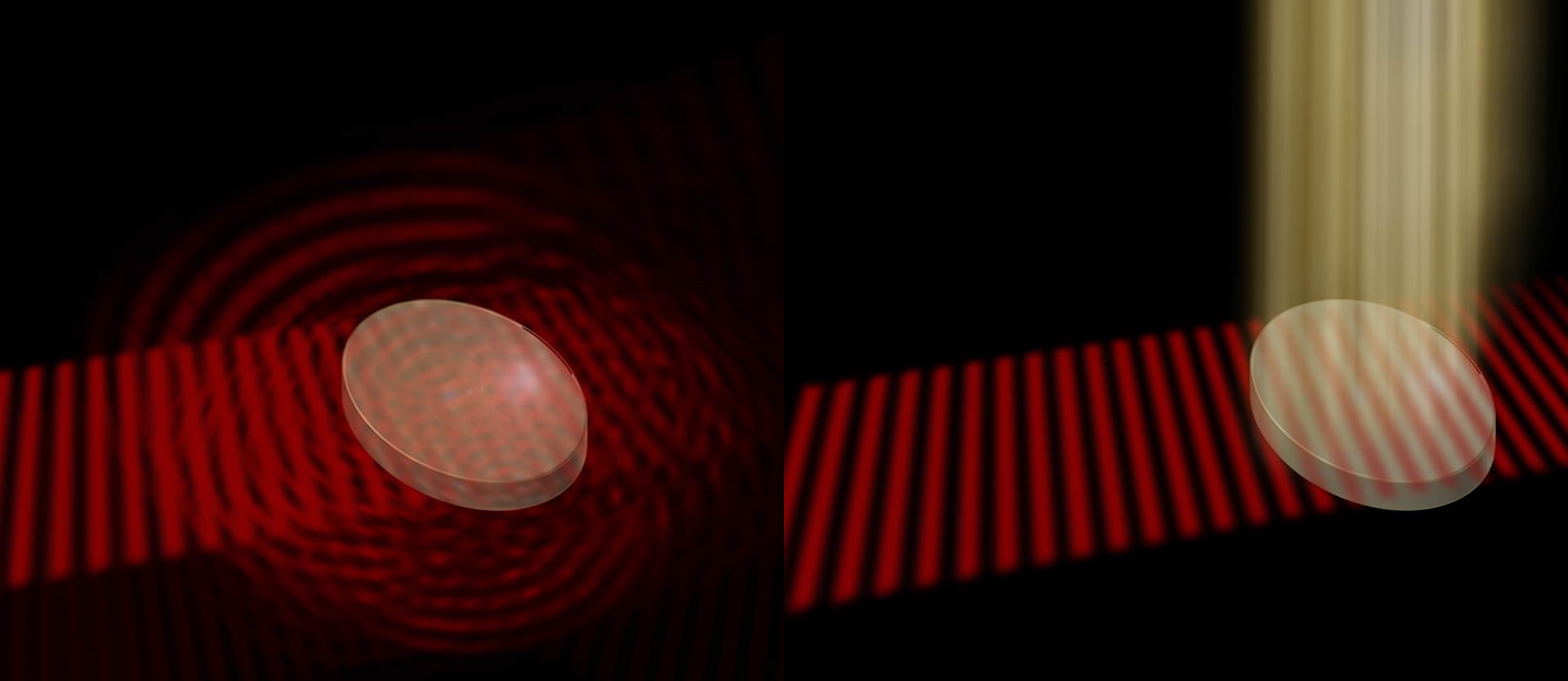
Hidden in a Web of Light

How does one go about making a macroscopic object invisible? This question has intrigued humans for at least a millennium – witness the many myths and fairytales in which the feat is accomplished with the aid of a incantation or a magic ring. But seen in the cold light of day, the task appears a great deal more difficult.
A team of researchers at the Technical University in Vienna has now developed a new theory, which could in principle provide the foundation for a novel technological approach to making things disappear at will. The object in question is irradiated from above or below with a laser beam whose intensity distribution varies in a prescribed manner. If the object is then simultaneously illuminated from one side, instead of being partially backscattered as one would expect, this beam propagates with constant intensity through the object; i.e. the light waves are fully transmitted. In other words, the object is rendered invisible, as a result of the interaction between the waveform impinging on it from above and the light directed at it from the side.
“Complex materials, such as a sugar cube, for example, are opaque because light waves are scattered within them,” as Prof. Stefan Rotter of the Institute of Theoretical Physics at the TU in Vienna explains. “The light can penetrate the object and pass through it, but it cannot pass straight through and emerge unaltered on the other side. Instead, it is scattered in all possible directions.”
In recent years, several strategies for neutralizing the effects of light scattering have been proposed, with the aim of weaving a ‘cloak of invisibility’ around any given object. One such method makes use of so-called metamaterials, whose surfaces are patterned in such a way that light rays are deflected around the object to be concealed. Experiments have also been done with objects which themselves emit light. If, for instance, a computer screen re-emits the light that it absorbs, it will appear dark when viewed from the right angle.
The team in Vienna has tackled the problem at a much more fundamental level. “We wished to avoid deflecting the light rays around the target or having to work with supplementary displays. Our objective was to route the original light wave directly through the object, as if it were not there,” says Andre Brandstötter, one of the authors of the new study. “That sounds weird, but it is feasible with certain materials and with our special wave technology.”
“The trick is to illuminate the object in a spatially patterned fashion, augmenting the light targeted to specific points on the surface of the object and allowing light to be absorbed at other positions,” explains Prof. Konstantinos Makris of the University of Crete in Heraklion. “To do so, the appropriately patterned beam is projected onto the material from above – as one would with a conventional video projector, but with much higher resolution.
If the pattern of light intensity corresponds exactly to the distribution of disordered regions in the interior of the material – which are responsible for scattering – the effect of the scattering centres can be precisely compensated for, thus allowing a light beam coming from the right or left to pass unhindered, without loss of intensity, through the material.
“It is not immediately obvious that the required pattern of augmented and diminished illumination can be calculated mathematically,” says Rotter. “Moreover, each object which one wishes to cloak must be irradiated with a specific intensity pattern, which depends on the precise distribution of scatterers within it. We have developed a method that allows us to calculate the appropriate pattern for any arbitrary scattering medium.”
Using computer simulations, the researchers have verified that the method works in principle. The next step is to demonstrate it in practice. Stefan Rotter is confident that they will succeed. “We are engaged in discussions with experimentalists, with whose help we hope to realize this goal. It is probably simpler to try it first with sound waves, which are easier to work with than light waves – from a mathematical point of view that makes no significant difference.












